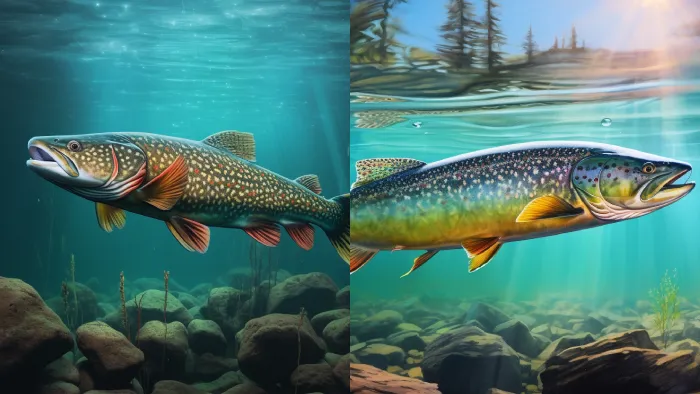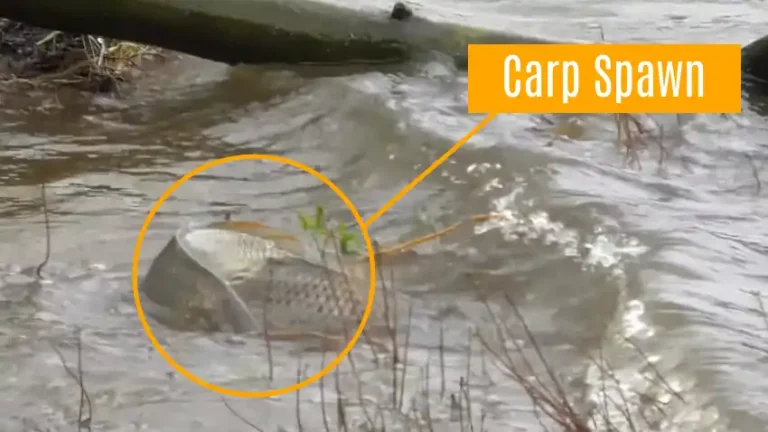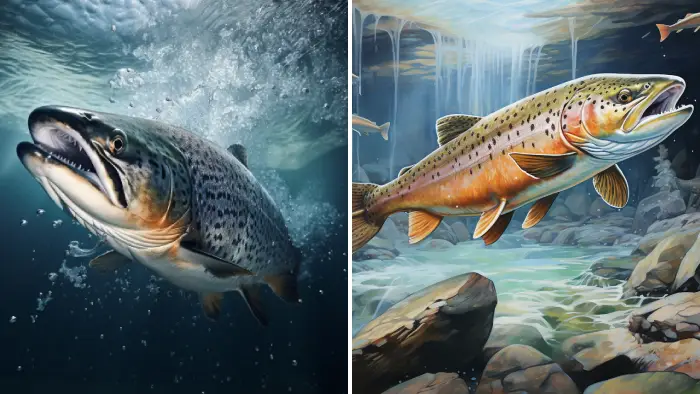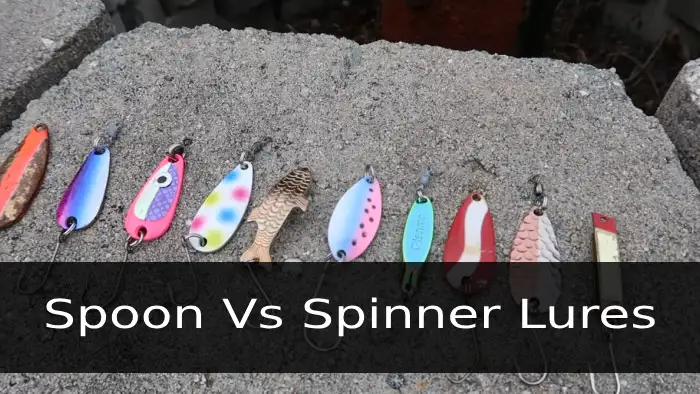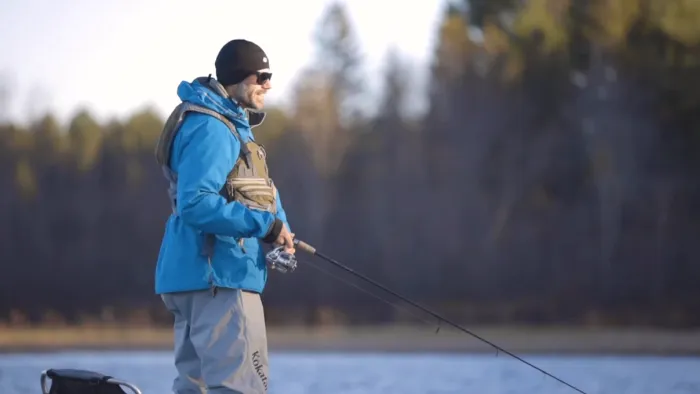Lake Trout vs Splake for Fly Fishing: 8 Significant Differences
Lake trout and splake are two intriguing fish species that often capture the attention of fly anglers. Although these species have certain similarities due to their genetics, they differ significantly in how they are approached as fly fishers.
Lake trout have a forked tail shape and exhibit varying coloration and markings, while splake has a slightly forked tail and distinct markings that combine their parent species. Also in size and weight, lake trout tend to be larger and heavier than splake.
We’ll look at eight major differences between lake trout and splake for fly fishing, exploring their characteristics. Besides, we uncover fishing techniques and the reasoning behind the peculiar name ‘splake.’ So keep reading for a successful fishing trip.
Distinctive Differences Between Lake Trout & Splake for Fly Fishing
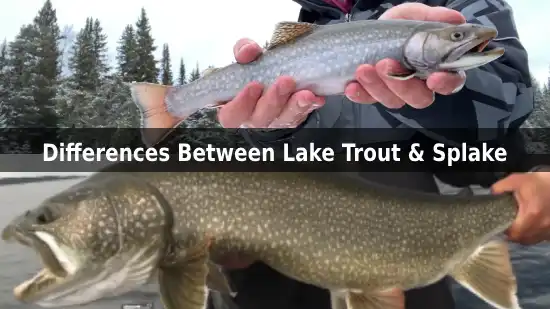
Lake trout and splake are two distinct species commonly targeted by fly fishermen. But they are significantly different in:
- Origin and biology
- Tail shape
- Coloration and markings
- Size and weight
- Fishing techniques and gear
- Habitat and depth
- Behavior and adaptability
- Culinary qualities
Let’s discuss these differences in detail:
1. Origin and Biology
You might be interested to know that the origin and biology of splake are fascinating. They are a hybrid species resulting from the crossbreeding of a female brook trout and a male lake trout. This unique combination of parentage gives splake distinct characteristics that set them apart from brook and lake trout.
Splakes have a body shape and coloration similar to brook trout, mixing dark spots and vibrant red and blue colors. They also possess the larger size and aggressive feeding behavior commonly found in lake trout.
Meanwhile, Lake trout is a distinct species belonging to the char family. Unlike splake, they are not hybrids but pure species in their own right.
2. Tail Shape
The snake’s tail, showcasing a moderate fork, differs from the lake trout’s deeply forked tail and the brook trout’s slightly forked tail. The tail shape of the splake is an important characteristic that distinguishes it from its close relatives.
A moderate fork in the snake’s tail allows it to balance agility and stability in the water. This tail shape allows the splake to navigate different water environments easily.
On the other hand, the lake trout’s deeply forked tail provides enhanced maneuverability, allowing it to change direction and pursue prey swiftly. Although less pronounced, the brook trout’s slightly forked tail still aids in its ability to move through the water.
3. Coloration and Markings
With variations influenced by water turbidity, Splakes typically have fewer and less vibrant white spots than their close relatives. This coloration difference is evident when comparing splake to lake trout. Splake color can vary depending on water turbidity, with some individuals showing more pronounced dark hues.
Conversely, Lake trout, known for their dark green to olive coloration, display distinctive white or cream-colored spots on their bodies.
4. Size and Weight
Regarding size and weight, splake are generally smaller and lighter than their close relatives, the lake trout. Splakes have an average length ranging from 10 to 18 inches and an average weight of 4 to 8 pounds.
In contrast, lake trout can grow significantly larger, with average lengths of 25 to 40 inches and weights of 10 to 20 pounds. Sometimes lake trout have the potential to reach lengths of up to 60 inches and exceed 60 pounds in weight.
5. Fishing Techniques and Gear
For professional fly anglers looking to catch the elusive splake, it’s best to have lighter fly fishing gear and end tackle at your disposal. This allows for more sensitive and nuanced movements, which is essential when targeting smaller fish.
Techniques like trolling, vertical jigging, and fly fishing can all prove effective, depending on the conditions and preferences of the angler.
Meanwhile, heavier gear and tackle are necessary if you’re looking to pursue the larger lake trout. Understanding the unique gear and techniques required for this species increases your chances of successful catches.
6. Habitat and Depth
Unlike lake trout, splakes are typically found in shallower waters and prefer freshwater environments with clear, cold-water depths. They thrive in various freshwater environments, including oligotrophic lakes.
Also, splakes have a higher tolerance for warmer water temperatures and can survive in shallower waters with less dissolved oxygen.
Then again, lake trout prefer clear, cold-water lakes and are often found in deeper areas where they can access colder water temperatures. This difference in habitat preference is due to their physiological adaptations. However, they have a lower tolerance for warmer temperatures and require colder, deeper waters to thrive.
These habitat preferences also affect their feeding behavior, with splake often feeding near the surface and lake trout feeding at deeper depths.
7. Behavior and Adaptability
Splakes, as a combination of lake trout and brook trout, display a range of behavioral traits that make them an intriguing subject for study. These fish have adapted to various environments, allowing them to thrive in cold and warm waters.
They exhibit behaviors typical of both parent species, such as a preference for colder waters like lake trout, and the ability to tolerate warmer temperatures like brook trout.
In contrast, lake trout are more straightforward in their habits and tend to stick to colder waters and deeper habitats.
8. Culinary Qualities
For the more experienced and professional chef, lake trout offers a stronger fish flavor that can be prepared in numerous ways. Its versatility means that you can get creative with your cooking techniques, whether that means grilling, smoking, or baking.
Meanwhile, splake is a blend of flavors that takes the best of lake and brook trout to offer a delightful taste experience. If you’re a fan of fish, you’ll love the unique blend of flavors that this hybrid species offers.
Why is it called Splake?
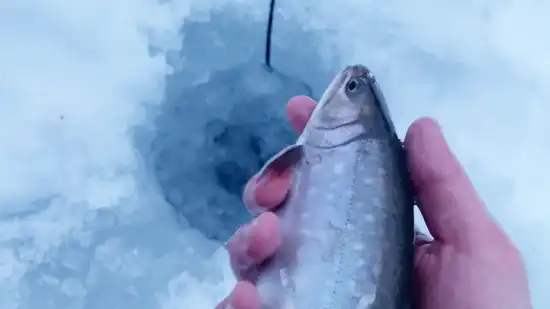
Splake is a hybrid fish from the crossbreeding of a speckled (or brook) trout and a lake trout, and the name ‘Splake’ comes from combining the words ‘speckled’ and ‘lake’ to reflect the trout’s physical characteristics and habitat.
Its external appearance is challenging to identify due to its resemblance to both parents. The splake’s body shape lies between the heavier lake trout and the slimmer brook trout. This hybridization leads to a unique combination of traits, making it an intriguing species for study.
How do you fish for Splake?
To catch splake, there are different methods to consider depending on the season and the depth of water they inhabit.
During the summer months, when splake can be found in deep water, baitcasting or fly tackle would be most effective. Bait casting involves using a baitcasting reel and a heavier line to cast the bait into the deeper waters where the fish are located.
Light spinning methods would work best in the cooler months when splake moves to shallower areas. This involves using a spinning reel and a lighter line to cast lures or live bait closer to the shoreline.
What is the best bait for Splake trout?
You should consider using small minnows or earthworms as bait when fishing for splake. These types of bait are effective in attracting splake trout due to their natural appeal and scent.
Small minnows mimic the prey that splake trout typically feed on, such as small fish and aquatic insects. Conversely, Earthworms are widely used as they are readily available and can be easily rigged on a hook.
When using small worms or minnows as bait, it is recommended to use a technique such as jigging, where the bait is moved in an up-and-down motion to mimic the movement of live prey. This can entice the splake trout to strike, resulting in a successful catch.
What is the nickname for lake trout?
One nickname for lake trout is ‘mackinaw.’ The lake trout, or Salvelinus namaycush, is a freshwater char species found primarily in lakes in northern North America. It is also known by other names such as namaycush, lake char, touladi, togue, and grey trout.
In Lake Superior, it can be referred to as siscowet, paperbelly, and lean. The lake trout is a popular game fish because of its size and fighting ability. It has a streamlined body, typically ranging from dark green to gray in color, with light spots on its sides.
Lake trout inhabit deep, cold waters and are often found in depths exceeding 100 feet. Anglers highly value them for their demanding nature and delicious flesh.
What kind of fish is lake trout?
Lake trout is a freshwater fish species belonging to the char family. This fish is primarily found in the lakes of northern North America. It is easily identifiable by its distinctive features, including its elongated and rounded body shape and its deeply forked tail.
This fish is the largest member of the char family, growing to impressive sizes. It is known for its preference for cold waters and is often found in deep, clear lakes with cool temperatures. Anglers highly value these fish for their challenging nature and delicious flesh.
What is the best place to fish for lake trout?
Lake trout can be found in several states nationwide, and learning about where they thrive is always exciting. Colorado, Idaho, Massachusetts, North Dakota, South Dakota, and Wyoming are ideal places to fish for lake trout.
Being informed about the distribution of these fish species can certainly enhance any angler’s experience on the water.
What are the three species of lake trout?
You can find the three different species of lake trout in Lake Superior. These species are the lean lake trout, humper lake trout, and siscowet lake trout.
- The lean lake trout is characterized by its slender body shape and streamlined fins, allowing it to swim swiftly through the water.
- Conversely, the humper lake trout has a more robust body with a humped back, giving it a distinctive appearance.
- Lastly, the siscowet lake trout is known for its deep body and large head, enabling it to dive to great depths in search of food.
Each species has unique adaptations and ecological niches within the lake ecosystem. Understanding the differences between these species is essential for effective management and conservation strategies.
Discover the Distinctions Between Lake Trout and Splake to Enhance Your Fishing Adventure
The differences between lake trout and splake go beyond mere appearance and extend into their behavior, habitat preferences, and culinary qualities. For fly anglers seeking diverse experiences and challenges, both species offer unique opportunities to explore various techniques and strategies.
By understanding the unique characteristics of these species, you can enhance your fishing experience. While these distinctions provide valuable insights, individual variations, and local conditions should also be considered when embarking on a fly fishing adventure targeting these captivating fish species.
Keep exploring and enjoy the wonders of the aquatic world.

